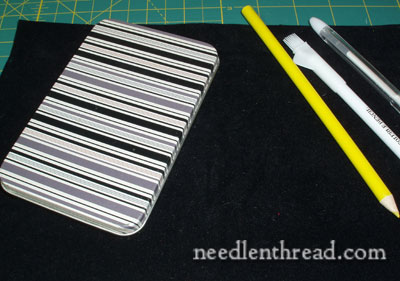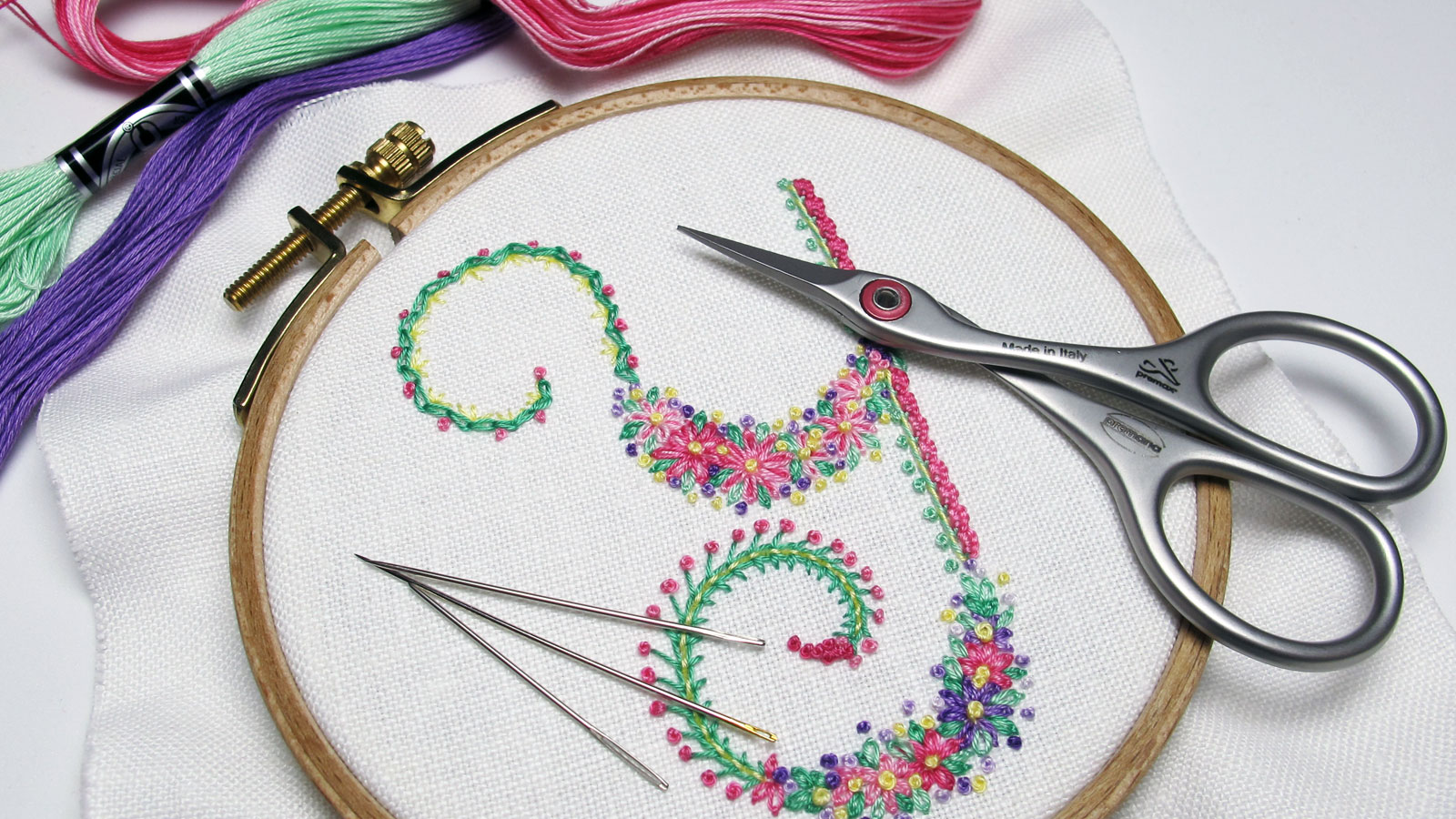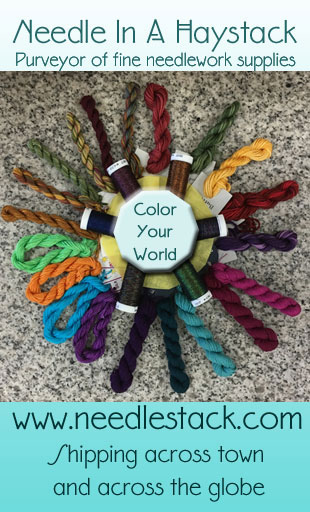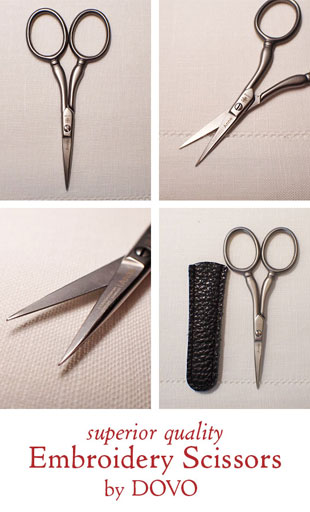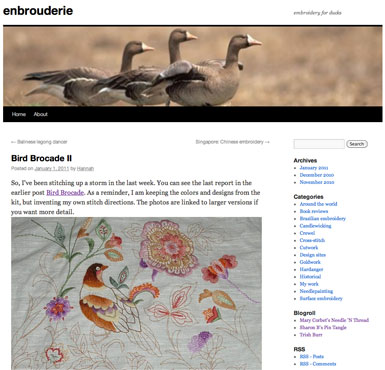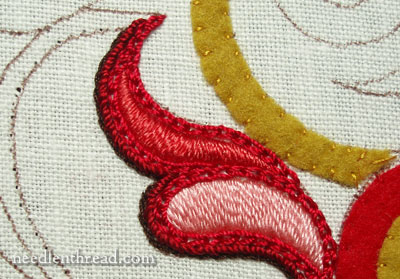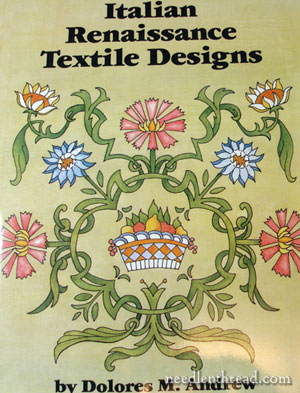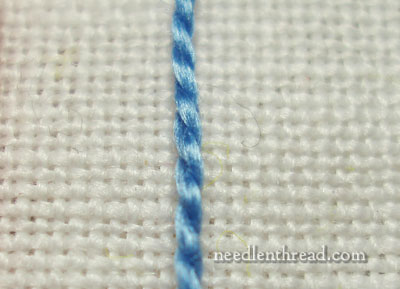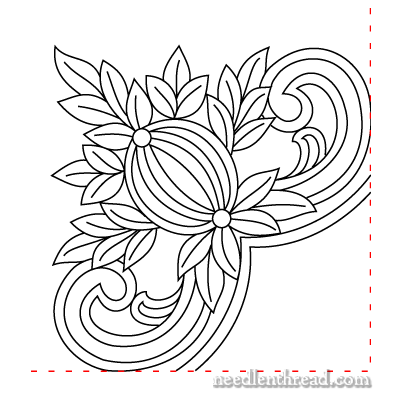January 10, 2011
Goldwork Thread Tray & How To Make One
Various metal threads for goldwork are cut into pieces and sewn onto the ground fabric like beads. For example, bullions and purls (check, smooth, and rough) are applied in this fashion. The pieces are often cut in advance, and then sewn on as you go. You can see a good example of this when I started applying the chip work the goldwork pomegranate I embroidered last year. I usually work on a velveteen or velvet mat, and I’ll usually put the mat inside whatever basket or tool box or any other thing with sides on it that’s at hand, so that I can pick up the mat with the cut pieces on it, and hold it next to my work surface.
But you know, the idea of having something a little more permanent – especially something that closes and keeps the already-cut gold threads secure – has preyed on my mind off and on. I decided to concoct my own goldwork tray, one that was small enough to be comfortably holdable, and that could close for storage when putting a project away.
